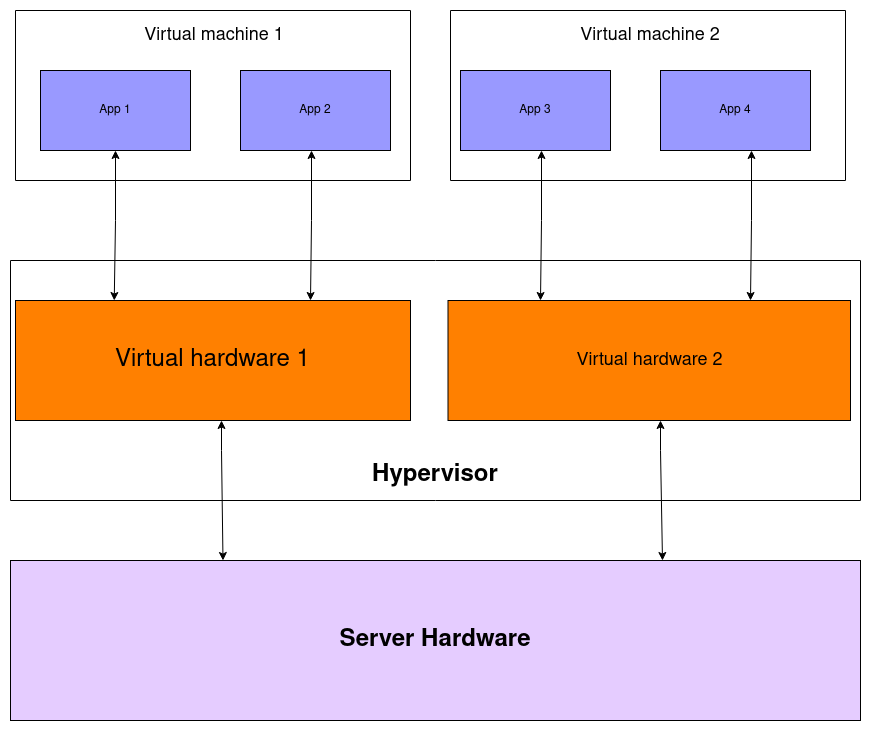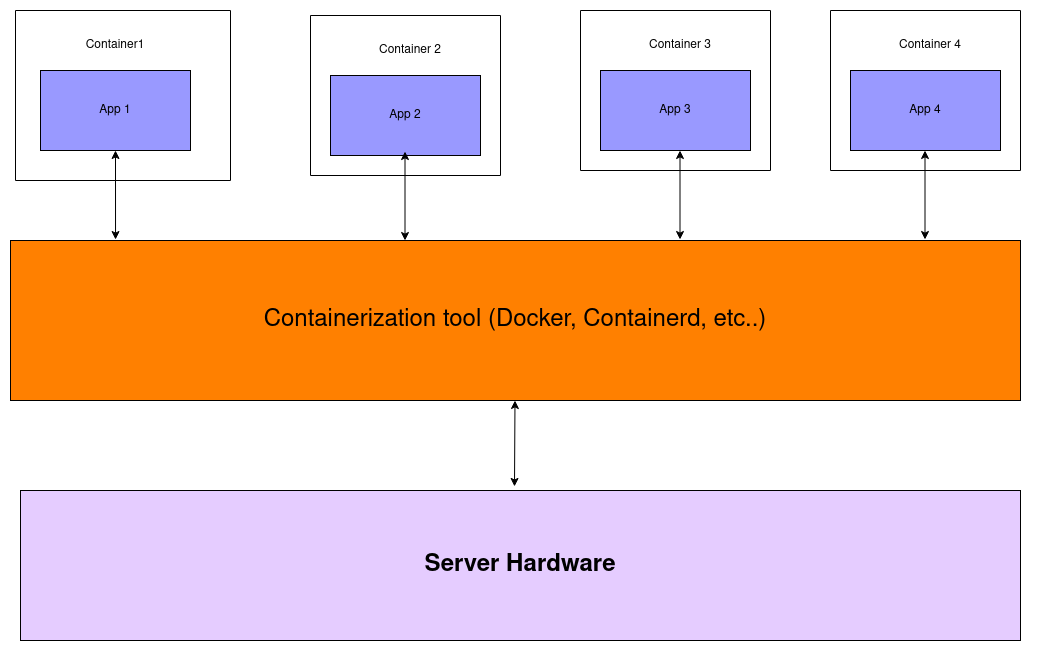Virtualization Vs Containerization: 6 Key Differences
Traditionally, software engineers used to run and deploy applications on physical machines. But what happens when you have one application that requires Windows and another that requires Linux?
How could you run these two on the same physical machine? In addition, what if the deployed applications need to handle more user requests? In that case, you need to add more RAM and CPUs to your machine, which is usually costly and can’t scale infinitely. This is where virtualization and containerization come into play.
Virtualization and containerization are popular because they let you easily run and scale applications in different environments. Although virtualization and containerization are somewhat similar, they are fundamentally different technologies. Understanding the differences between these two technologies will help you to choose the one that best suits your project needs.
This article will present the six key differences between virtualization and containerization.
Key takeaways
- Choose virtualization if you want an isolated environment to implement your tasks. For instance, when using Kali Linux to execute penetration testing.
- Choose containerization when you want to quickly test an application that’s in the development stage.
- Choose containerization - for its scalability capabilities - if you want your application to handle a growing number of requests without sacrificing performance.
What is virtualization
Virtualization uses a wholly isolated operating system from the host machine. It uses hypervisor software to abstract the physical characteristics of the host machine and apply them to the virtual machines.
The hypervisor sits between the host operating system and the virtual machines and provides configurable physical resources from the host to the virtual machines. Below is a diagram demonstrating the use of virtualization in running applications.

What is Containerization
Containerization is virtualization but much lighter, allowing applications to run in isolated environments. It packages applications into units called containers. These containers can be deployed and run consistently across different computing environments: development, testing, and production. Below is the diagram which illustrates how applications are managed using containerization.

6 Key Differences Between Virtualization and Containerization
You have learned what virtualization and containerization are in the previous sections. Now let’s go through the key differences between them.
1. Isolation
Virtualization and containerization offer different levels of isolation. Virtualization creates a virtual machine that acts as a standalone separating system that emulates low-level hardware devices like CPU, disk, and networking devices. On the other hand, containerization does not emulate low-level hardware devices and relies on the host operating system to create lightweight virtual machines called containers.
In terms of security, virtualization is more secure than containerization. If one of the virtual machines is being exploited, the other virtual machines are still safe because virtual machines are completely separate from each other. With containerization, containers share the same underlying system hardware with the host machine. If one of the containers is exploited, other running containers and the host machine are put at risk.
2. Operating System
Containerization relies on the resources belonging to the host machine OS. Virtualization, in contrast, creates a whole new operating system separate from the host operating system. The operating system in the virtual machine with virtualization technology can be Windows or Linux.
3. Start-up time
The start-up time, also known as overhead, is short for containers because they rely on an already-running host operating system. Virtualization takes longer because virtual machines must boot their own OS first.
4. Size
Virtualization creates a fully isolated environment for the virtual machine with its own operating system. A container, on the other hand, only contains the dependencies and the source code. Because of this, the instance size of a virtual machine is much larger than that of a container.
5. Cost
Generally, a host server can only host a few virtual machines due to the resources that they require. With containers, the required resources are fewer, and the sizes are smaller, so a host server can even serve hundreds of containers. As a result, the cost of using virtual machines is much higher than that of using containers.
6. Scalability
Regarding scalability, containerization is much better than virtualization since it does not require a lot of resources to run and does not have much overhead. Also, with the introduction of orchestration tools like Kubernetes, you can quickly scale the containers’ resources and instances to suit your needs.
FAQs
Below are some of the common questions.
Which one should I apply, virtualization or containerization, to build software applications?
Virtualization saves infrastructure costs by spanning multiple virtual machines on a single host server. However, it lacks support for application management and also requires a significant amount of resources to run.
Containerization, on the other hand, allows you to easily bundle your application code with all the dependencies it requires to run. With that said, you should use containerization for building software applications.
Can I apply containerization inside a virtual machine?
Yes, you can apply containerization inside a virtual machine to group different sets of applications from each other. For example, you can have one Windows 11 virtual machine with containers for your application. Your teammate can have an Ubuntu virtual machine in the same physical machine as yours to run their app.
Conclusion
In sum, Virtualization simulates a physical machine’s aspects, such as CPU cores, disk, and memory. Containerizatization simulates the OS of a machine. Virtualization creates a much larger instance that takes longer to boot but is more secure. Containers, on the other hand, are lightweight, easily scalable, and boot fast. However, they are less secure than virtual machines.
To learn more about how to work with containers, check out our Beginners Docker Course. And, to learn how to create virtual machines as code, check out our Terraform Basics Training Course.
